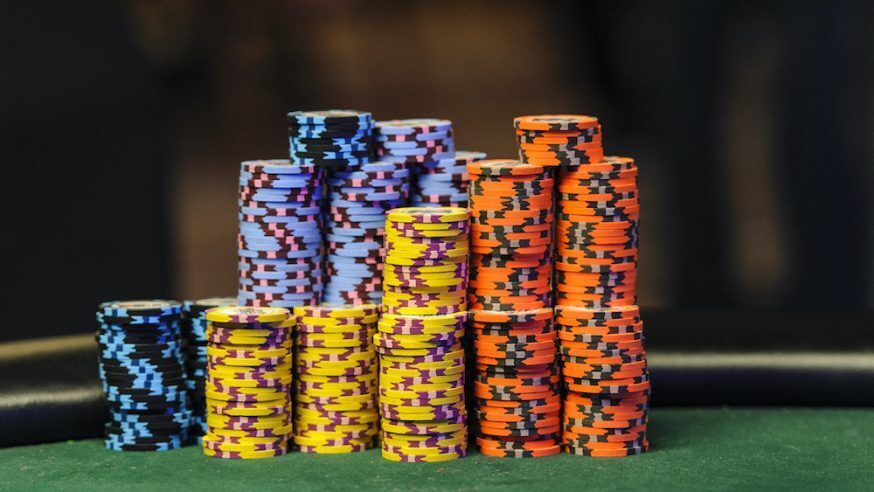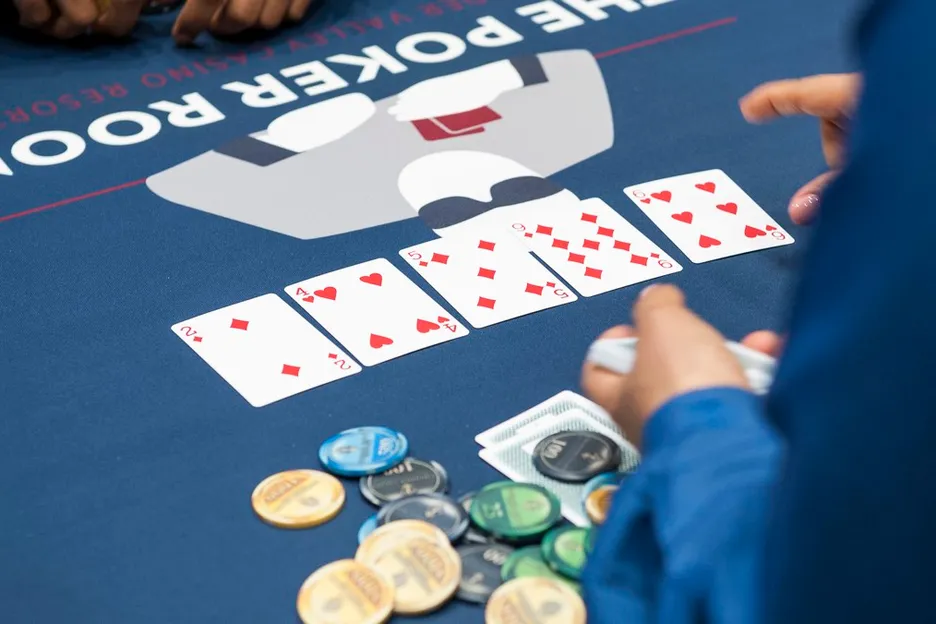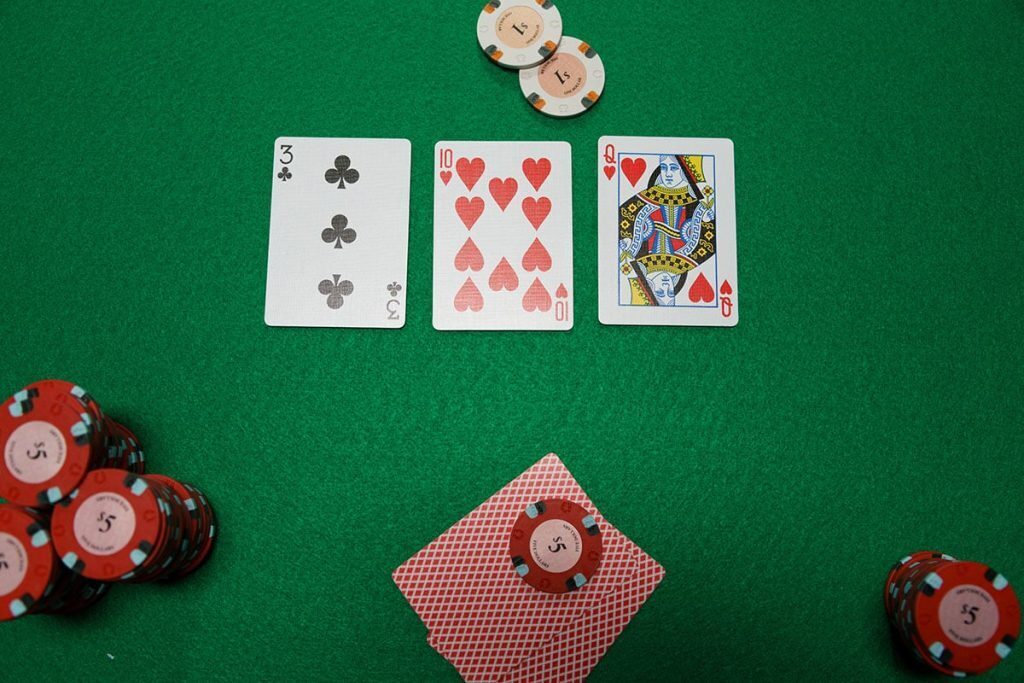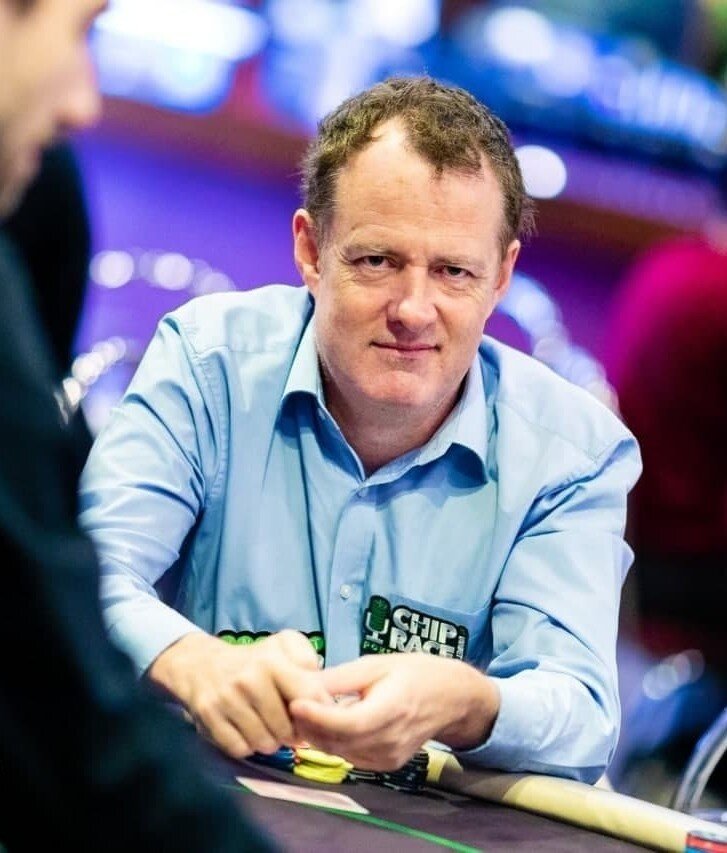Playing poker involves a combination of skill, strategy, and luck. To get started, you'll need to learn the basic rules…
Read MoreControlling the Pot in Texas Hold’em

So what is pot control? In simple terms, it means controlling the size of the pot to keep it appropriate to your hand strength. Say you have a strong but not super strong hand. It’s strong enough to bet but not really strong enough you want to put a whole lot of money in with.
The basic idea is that you want to play a small or medium sized pot, so your opponent(s) will tag along with weaker hands than yours, but if all the money goes in, your hand is not as likely to be good. Or, in the succinct words of Dan Harrington, “Big hand, big pot. Small hand, small pot”.
So let’s look at some situations where you should consider pot control.
Pot Control On the river

You get to the river and an obvious draw hits. Your opponent has been betting and you’ve been calling down. You have a weak hand that just got weaker: something like top pair mediocre kicker. Your opponent could have:
- (A) a stronger made hand than yours
- (B) a weaker made hand than yours
- (C) the draw that got there
- (D) something else like a different draw that missed
What to do? You think that if you check your opponent will:
- (A) bet big but not huge with his stronger made hands, encouraged by your check into believing you didn’t improve on the river.
- (B) check behind his weaker made hands, now figuring he’s behind all your draws that got there
- (C) bet big with the draws that got there to extract value
- (D) bet big with some missed draws as a bluff
You can maybe now see the problem of checking the river. When you’re still ahead of a weak made hand, your opponent will check and you win nothing extra. When you’ve fallen behind a draw that got there, or your opponent has a different missed draw, your opponent will bet big and put you on a difficult spot.
If you always call, you’re a station paying off his value too often. If you always fold you’re raising the white flag, allowing them to just bluff you to oblivion. To avoid being exploited you have to call some of the time fold some of the time, but it’s difficult to work out exactly how often, and easy to get it wrong.
Is there another way? Yes! The so called blocker bet is an idea that was around before solvers, but has really come into its own in the solver era, because solvers absolutely love the blocker bet. The basic idea is instead of allowing your opponent to decide whether to bet or not, and what size, you throw out a small bet yourself. This can have a number of useful functions:
- (A) when your opponent has a stronger made hand than yours, they just call, not wanting to reopen the betting just in case you got there on the river. This means you get your show down cheaper than if you check, they bet (big), and you call.
- (B) when your opponent has a weaker made hand than yours they were intending to check behind, they now call your small bet, and you extract extra value
- (C) when your opponent has the draw that got there, they will likely go ahead and raise. The fact that they’re willing to raise indicates a much stronger range than if you check and they bet, so you can fold more confidently knowing your hand isn’t good, and you get away cheaper than if you checked and called a bigger bet
- (D) when your opponent has something else like a different draw that missed, your blocker may dissuade them from bluffing. If you were likely to fold to the bluff, this means you win a pot you would otherwise have lost.
Historically the blocker bet was only used by weakish hands. Can you see the problem with that? If you always have a marginal to weak hand when you blocker bet, your opponent can put you in the bin by raising as a bluff, as well as for value.
Solvers get around this by betting most or all the hands they choose to bet on the river for this small size, and maintain a perfect balance between the following hand types to keep the opponent guessing and stopping them from exploiting us:
- (A) the weak marginal hands humans typically blocker bet
- (B) the very strong hands like the draws that got there. This extracts extra value from the weak hands that were now going to check behind because the obvious draw got there, AND the bluffs that decide to raise us now because they think the blocker always means a weakish made hand
- (C) a small amount of bluffs. Because we are using a small size, we have to expect our opponent to call most of the time, so we can’t get away with bluffing too often. But we should still bluff some of the time with the absolute worst hands in our range, to win pots where both ourselves and our opponent have nothing (but their nothings beat our nothings), and to potentially exploit opponents who mistakenly think the small blocker is never a bluff. When you bet the nut low for 10% of the pot on the river and your opponent folds, that’s a massive win!
One other thing that has changed in the solver era is the size of blocker bet. Older poker books generally recommend a size of 20-25% of pot, but solvers often go a lot smaller still. 10% of pot is probably the most frequent size, and you’ll sometimes see sizes even smaller like 6% in high rollers, from solver studied players who have run thousands of simulations. Often the solver will choose the smallest legal size, one big blind, irrespective of how big the pot is.
I once ran a simulation where I mistakenly gave the solver the option to bet half a big blind on the river. Given this option, the solver decided to use it with every hand it wanted to bet on the river!
Pot control on the turn
There are many situations post flop where the flop is so favourable for the range of the preflop raiser that the preflop defender should check 100% of the time (even when they’ve flopped a very strong hand), and the preflop raiser should just go ahead and bet 100% of the time (even when they have absolutely nothing).
When the defender calls, they go to the turn with a stronger range (because they would have folded all their garbage on the flop, or turned it into the bluff), whereas the aggressor’s range has not been strengthened, since they just went ahead and bet everything on the flop.
If the turn is now a blank (a card unlikely to have improved either player), the out of position defender will check again, and the aggressor has to decide whether to bet or not again. They can no longer get away with just betting 100% of the time because they no longer have clear range advantage (live, you will encounter this type of player, the so called betting station, quite frequently though, and let me tell you, they’re a dream to play against. You just let them keep bluffing and bluff catch them to death), so they have to decide which hands to bet and which ones to check.
Let’s imagine their hands divide into the following categories
- (A) very strong hands that will likely be ahead if they bet turn and river and get called
- (B) strong hands that will likely be ahead if they bet either the turn or river and get called, but not if both streets are bet
- (C) draws
- (D) trash
Which hands should be bet and which ones checked?
- (A) the very strong hands should obviously be bet again. You want to bet both turn and river to extract maximum value
- (B) the “one street” strong but not strong enough to bet every street hands can either check turn and bet river, or bet turn and check river. Which way you decide to go depends on how many draws versus made hands your opponent has in their range, and how they are likely to react to a turn check. If their range is mostly draws, then you obviously want to bet the turn, unless they are the type who will always bluff the river if you check the turn (and they miss the river). On the other hand, if their range is mostly mediocre made hands with few outs to improve on the river, you generally want to check, particularly if they’re the type who think you would never check the turn with a better hand than theirs. This player type will often fold the turn (fearing the third bet you aren’t intending to make on the river) but nearly always call the river, so check turn bet river is the best line against them
- (C) Draws are another class of hand you can go either way with depending on opponent. If they’re the type that like to call flops to keep you honest but then fold the turn a lot you want to bet again for obvious reasons. If on the other hand they are calling stations you may want to check your draws. If they are the type to get tricky and check raise a lot both for value and as a bluff, you definitely want to check.
- (D) Mostly you should be checking your trash, unless the board is so favourable for your range that you can justify betting everything (a so called range bet). Your bets should be hands that at least have some hope of improving like gutshots or one over card hands but if you don’t have enough of those to balance your value you may need to dip into the trash selectively. But at the very least don’t use hands that block your opponents folds. For example, if the flop was rainbow, and remains so on the turn, you’re better off bluffing with suited hands in the suit that came on the turn, because you want your opponent to have continued on the turn with a back door flush draw that hasn’t materialised (so they are willing to let it go to the second barrel).
Pot control on the flop
Your pot control considerations on the flop are by and large pretty similar to those on the turn. The only times you should definitely bet the flop are
- (1) it’s so good for your range you should range bet
- (2) you have a hand strong enough to bet every street
The second point is worth reflecting on. Just because you have a strong hand right now doesn’t mean you should always bet the flop. For example, top pair on K72 rainbow is a very strong hand, but if your kicker is marginal you may be better off checking (or taking a street out as the saying goes). Your hand probably isn’t strong enough to bet flop, turn and river unimproved, so you are going to have to decide which street not to bet. Since your hand is good but not great, and there’s no draws present, checking can achieve a number of useful things:
- (1) convince your opponent you don’t have a hand as strong as top pair, so they decide to pay you off on turn and river with worse hands
- (2) give their trash hands that would just fold to your flop bet the chance to improve on the turn and pay you off
- (3) embolden them to start bluffing on the turn. Often in poker, the best way to get value with a mediocre hand is to allow your opponent to bluff even worse hands
Pot control preflop
You might think pot control only applies to post flop where you can decide to not bet or raise so as to control the size of the pot, but actually pot control starts preflop. Back when I started playing about 15 years ago, the standard opening size was 3 big blinds or more, and threebet sizes were similarly bigger than they are today.
As modern poker theory has evolved, sizes have come down. Nowadays the standard open size is 2.3x, or less as stack get shallow. The smaller we open for or threebet preflop, the smaller the pot will be postflop, and the more wriggle room we will have to control the size of the pot.
In tournaments, this is particularly the case when ICM is significant, such as near the money bubble, or on or just before the money bubble. Because of this, you will see preflop (and postflop) sizings shrink even more, and more passive lines taken preflop in an attempt to avoid being all in by the river.
This is such a complex topic I could write a whole book on it (and in fact have: “Endgame Poker Strategy: The ICM Book”, available now on Amazon and elsewhere), but for the purposes of this article, just be aware that ICM almost universally reduces bet sizes and makes pot control even more crucial.
Conclusion
A final word of warning though: while there are often situations postflop where you want to use different bet sizes depending on the strength of your hand, you never want to do this preflop. You should open and threebet using the same size for all your hands. The most common and easy to decipher bet size tells are the preflop ones: many players use one size for their strong hands and another for their weaker or more speculative ones. Opponents don’t even have to be very perceptive to spot this, and take advantage of it. So stick to consistent sizes preflop with all your range.


